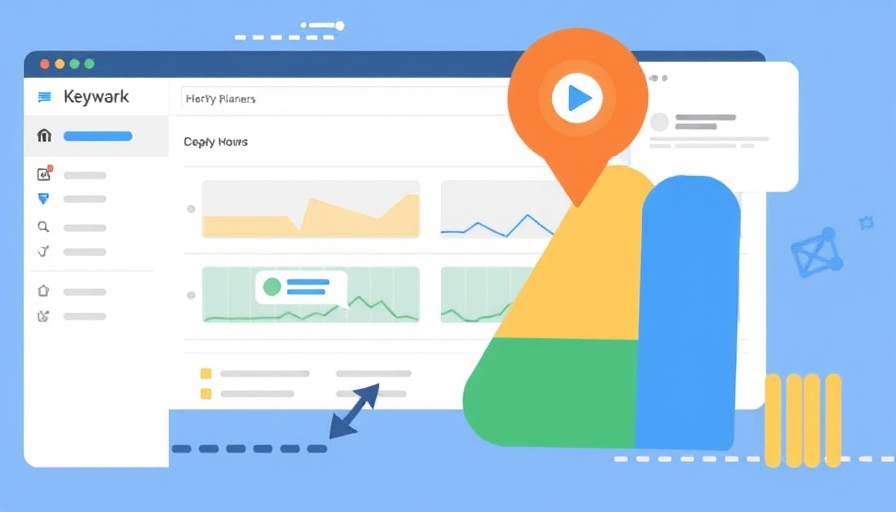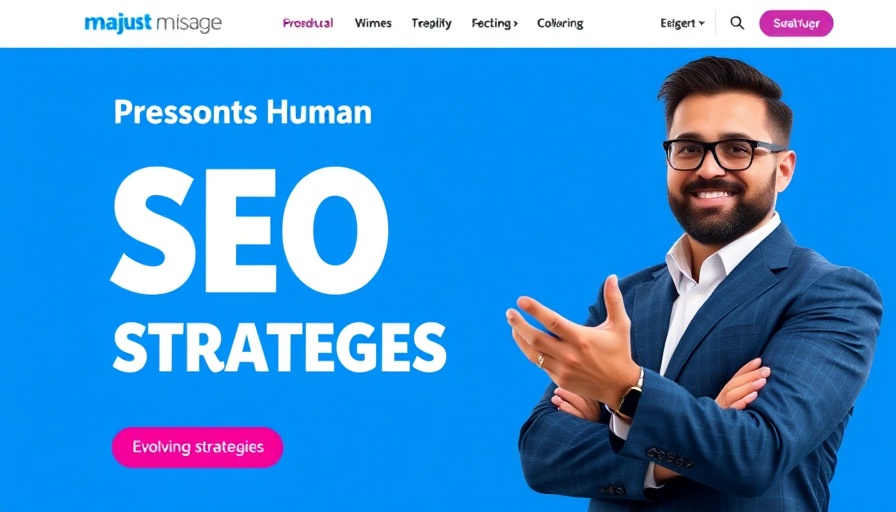
Understanding Buyer Personas: The Heart of Marketing
In the realm of marketing, few tools are as powerful as buyer personas. These fictional representations of your ideal customers are crafted from meticulous research and data analysis, embodying their demographics, motivations, pain points, and aspirations. Imagine walking into a store where every employee knows precisely what you need and can provide tailored advice; that is the essence of effective buyer persona development.
Why Buyer Personas Matter for Small and Medium Businesses
For small and medium-sized businesses, understanding buyer personas is not just beneficial; it's essential. As competition intensifies in every industry, having a clear insight into your target audience allows you to tailor your marketing efforts effectively. Research shows that companies using buyer personas experience a 73% increase in customer engagement. With this knowledge, marketers can ensure their messages resonate, reducing wasted advertising spend and bolstering return on investment (ROI).
Creating Buyer Personas: A Step-by-Step Guide
Creating effective buyer personas involves several key steps. First, conduct thorough market research to gather data about both existing and potential customers. Sources like customer surveys, social media engagement, and even competitor analysis can shed light on consumer behavior. For example, if you’re a local coffee shop, understanding the demographics of your customers—like age, spending habits, and frequency of visits—will help you craft messages that resonate with them.
Next, compile your data into a structured format. Use templates or charts to visualize different personas. Consider including names, backgrounds, their buying motivations, and common objections. For instance, a persona named "Eco-Conscious Emma" might prioritize sustainability, making her more inclined to purchase products that reflect her values.
Inspirational Buyer Persona Examples
To help stir creativity and guide you in crafting your own personas, here are eight compelling examples:
- Adventure-Seeker Alex: A 30-something professional who enjoys eco-friendly travel options. Geared towards a travel agency promoting sustainable tourism.
- Fitness-Focused Fiona: A health-aware millennial eager for accessible fitness solutions, aligning perfectly with a startup focusing on mobile fitness apps.
- Busy Parent Priya: A mother of two balancing work and family, looking for quick meal solutions from a catering service.
- Tech-Savvy Tom: An early adopter of technology seeking the latest gadgets, tailored to his life as a digital nomad.
- Stylish Senior Sam: A retired individual who values fashion and prefers personalized service, appealing to niche boutiques.
- Community-Minded Mary: A local advocate for social causes who loves supporting businesses that give back to the community.
- Budget-Conscious Ben: A college student seeking cost-effective yet stylish clothing options.
- Professional Professionality: A business executive looking for high-end professional attire, expressive of a polished image.
These personas provide a framework to tailor your marketing strategies effectively and connect authentically with potential customers.
Leveraging Buyer Personas Across Your Marketing Strategy
Once your personas are developed, it’s crucial to integrate them into all aspects of your marketing strategy. Utilize these personas to inspire content creation, email marketing campaigns, and even social media strategies. By speaking directly to the needs and concerns of your personas, you’ll foster deeper connections and ultimately drive conversions.
Common Misconceptions About Buyer Personas
Many marketers mistakenly view buyer personas as just another checkbox to tick off on their lists. In reality, they are dynamic entities that should evolve alongside consumer behavior and market trends. Regularly revisiting and updating your personas is essential to keep them relevant—static personas can lead to misguided marketing strategies.
Conclusion: Take Action for Your Business Growth
Developing a comprehensive understanding of buyer personas is not just a marketing trend; it is a pivotal aspect of driving growth for small and medium-sized businesses. If you haven't started creating your buyer personas yet, now is the perfect time to begin! Harness the power of these insights by downloading free templates that offer guidance on constructing effective profiles tailored to your audience's needs. Knowing your customers inside and out will allow you to resonate with them more deeply, leading to enhanced engagement and loyalty. Take the first step today!
 Add Row
Add Row  Add
Add 



Write A Comment